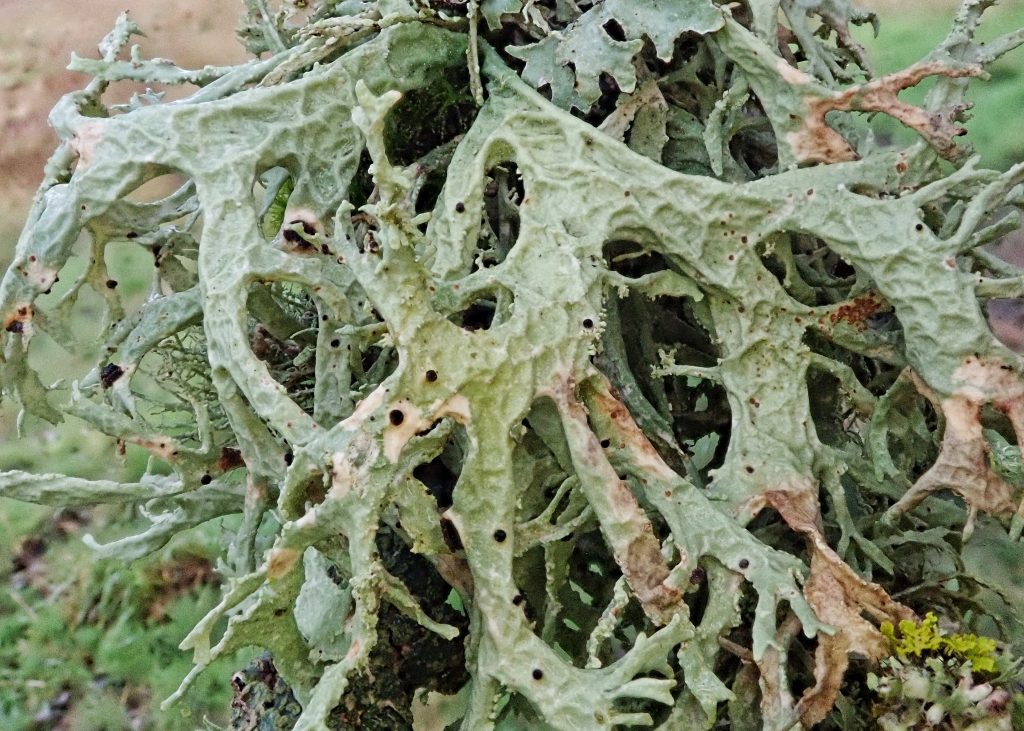
Evernia prunastri is almost ubiquitous on the we(s)t side of the Cascades. But it is not actually as common as I thought it was before researching this profile. That is because I made unfounded assumptions from good and useful information, and limited experience.
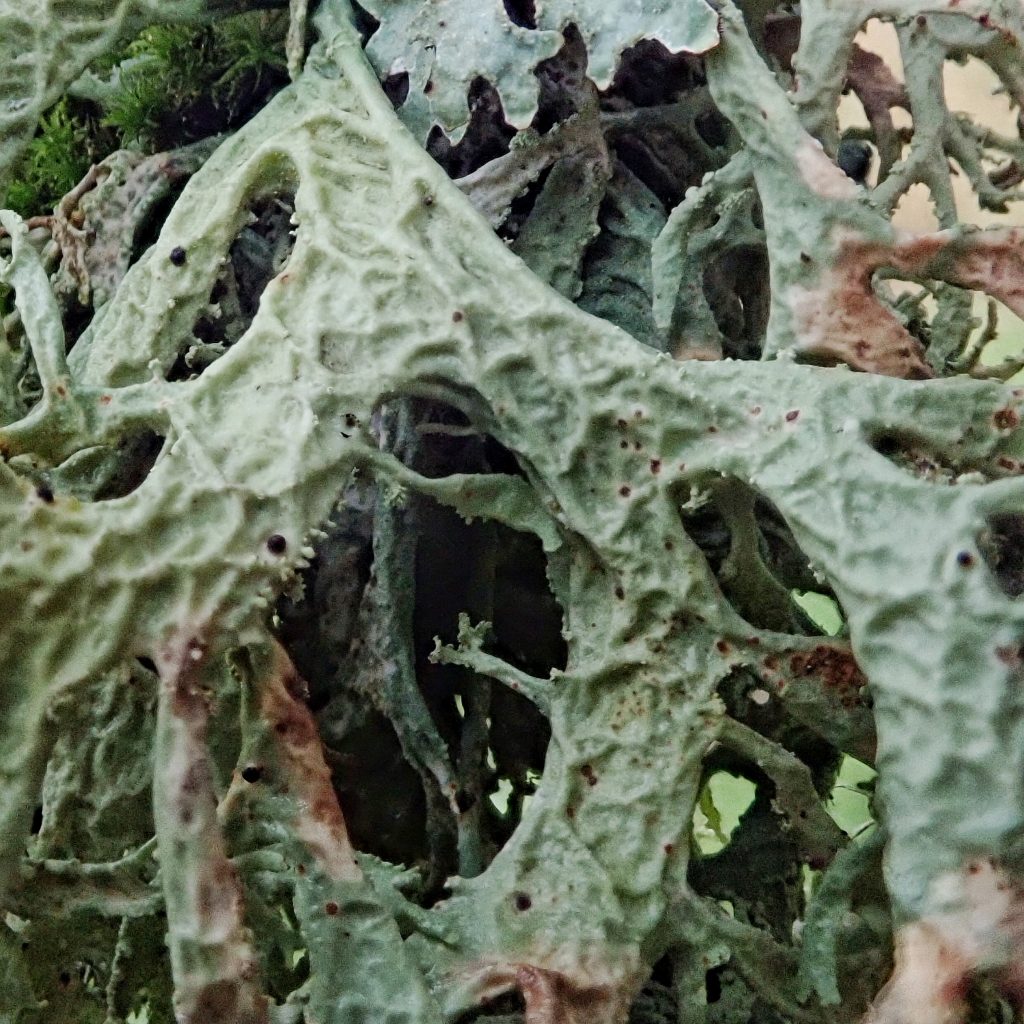
At the first lichen walk I attended almost two years ago I was told that this lichen is greyish green, strappy, monotypic, lighter colored ventrally than dorsally, and is extremely common. And not only did the specimens our guide showed us echo those traits, so did the dozen or so I checked out myself that day. In fact everything I examined which seemed similar turned out to possess those characteristics.
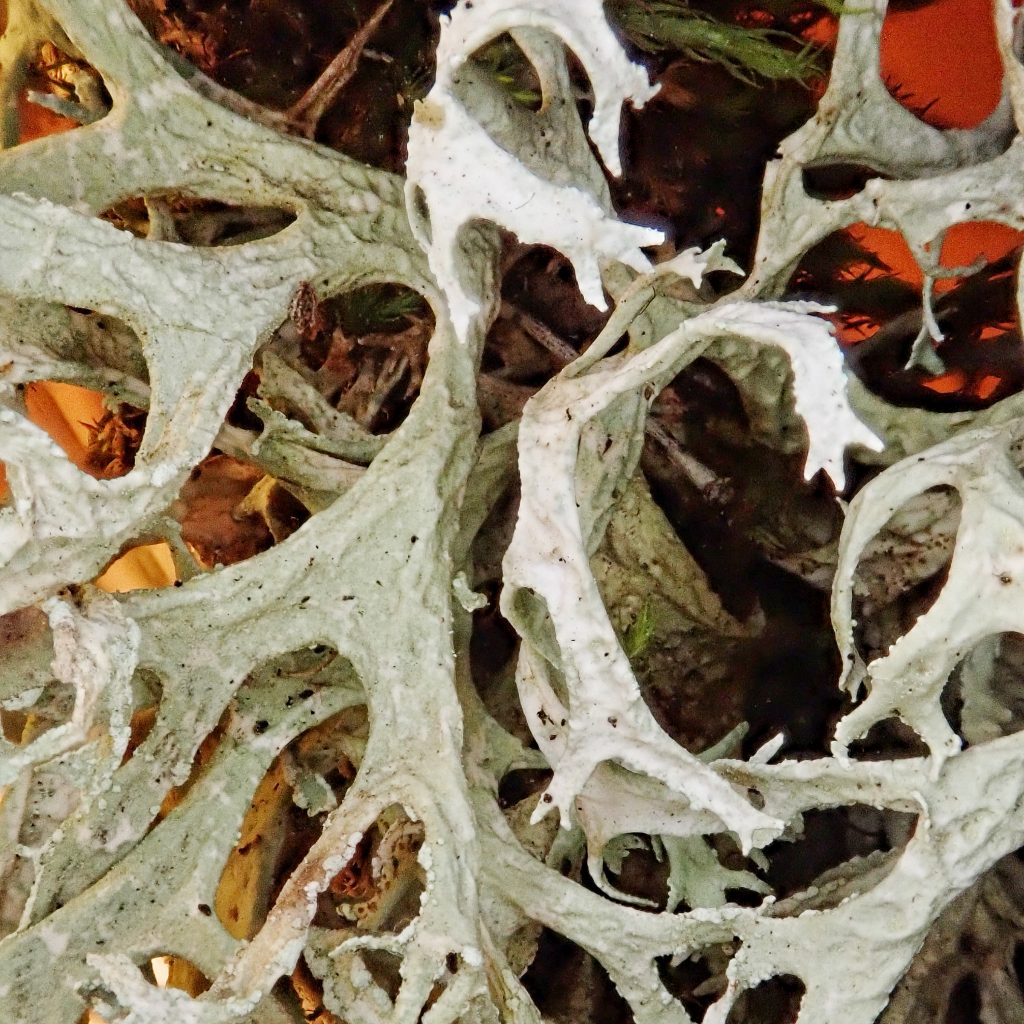
My mistake came from not following up with some reading, and not closely examining the hundreds (maybe thousands) of bushy, greyish green lichens I see festooning branches everywhere I go. Because when I did read up on Evernia prunastri for this profile I immediately saw a reference to the superficially similar lichen Ramalina farinacea. And I realized some of my photos looked more like the latter than the former.
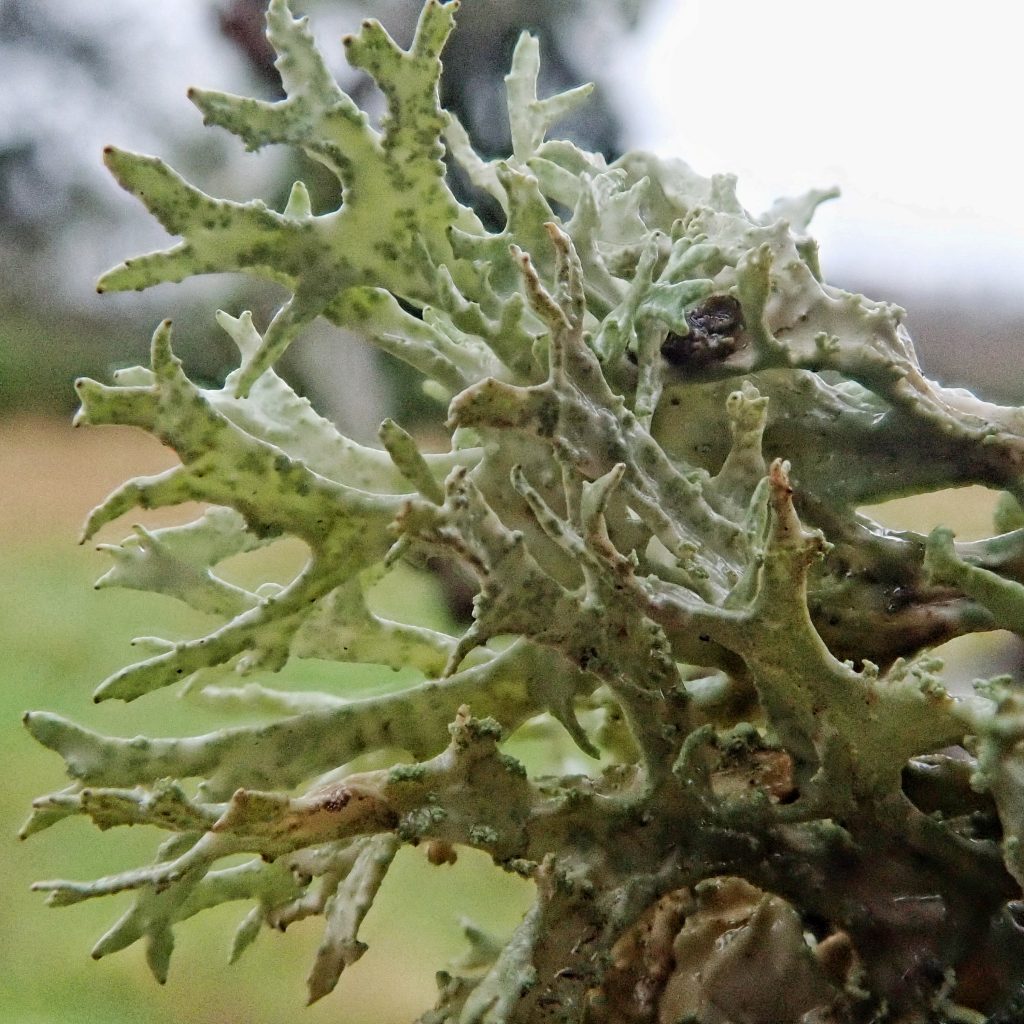
So out I went with a hand lens and motivation, and examined dozens of each type. When I felt like I had a good handle on it I collected a few that had less distinct characteristics, brought them home, and did spot tests on all of them. As of today, after actually performing my due diligence, I feel very good about identifying and differentiating these two species.
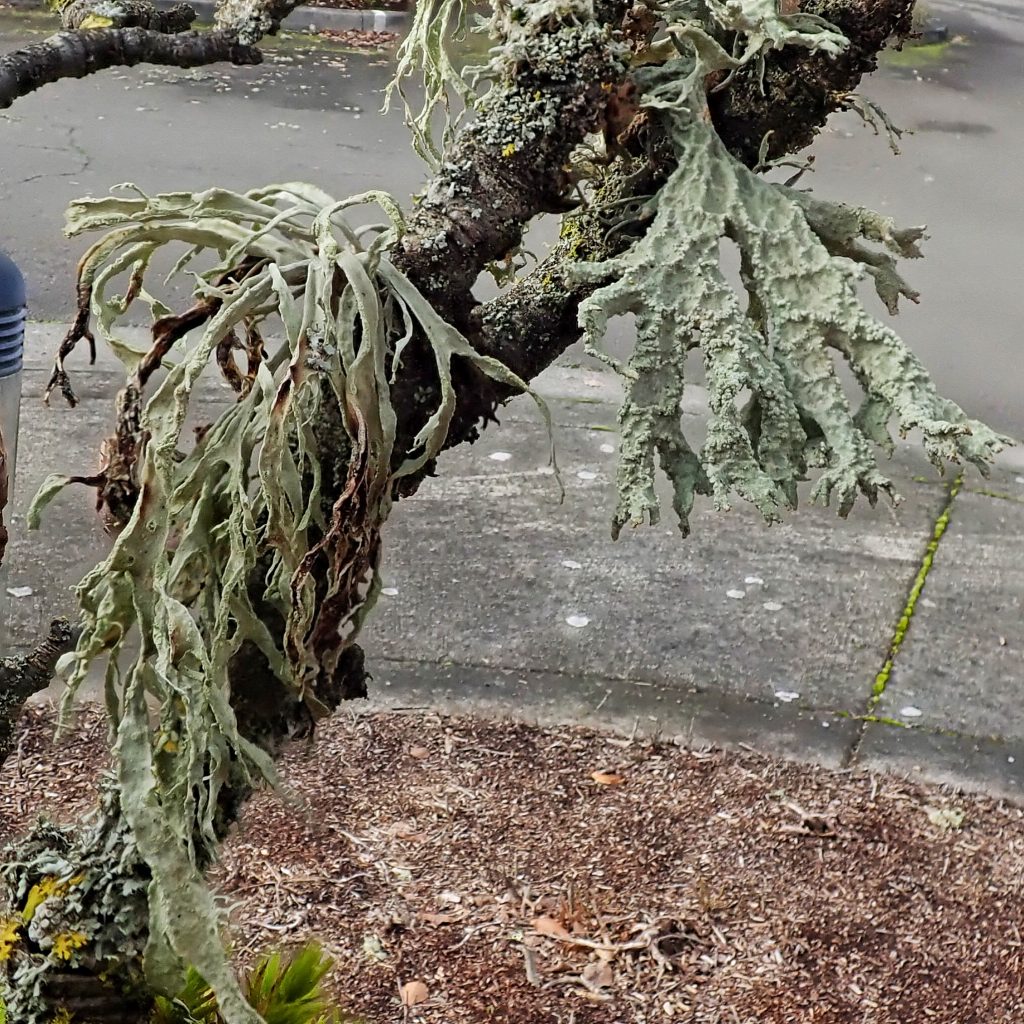
Probably the most common common name for Evernia prunastri is oakmoss. This is a particularly annoying common name because it grows on many deciduous trees (Carl Linnaeus claimed it preferred prunes) as well as some conifers. And, of course, it’s not a friggin’ moss (which isn’t even the right kingdom)!
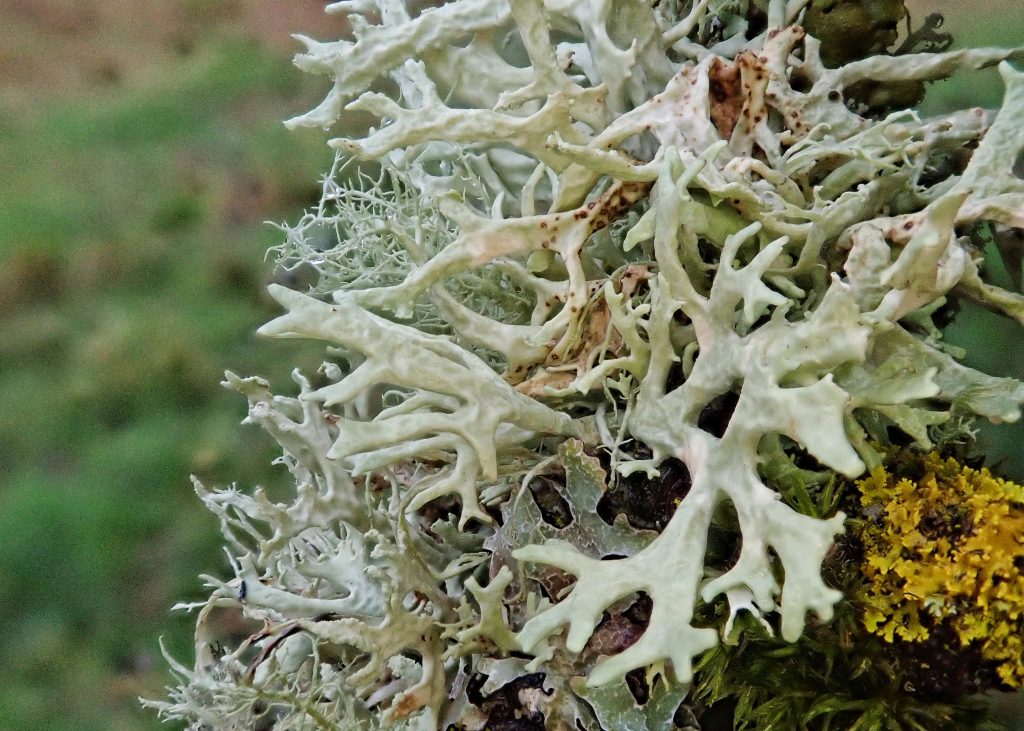
Evernia prunastri has a long history in the perfume trade, (another, primarily European, common name is perfume antlers) dating from at least as far back as the 1500’s. Its primary use is as a base note, around which can be arrayed other natural scents. The demand has been so high as to seriously endanger this lichen in Europe. However recent studies have shown that it causes an allergic reaction in a small but consistent proportion of the population, and demand has decreased to a trickle.
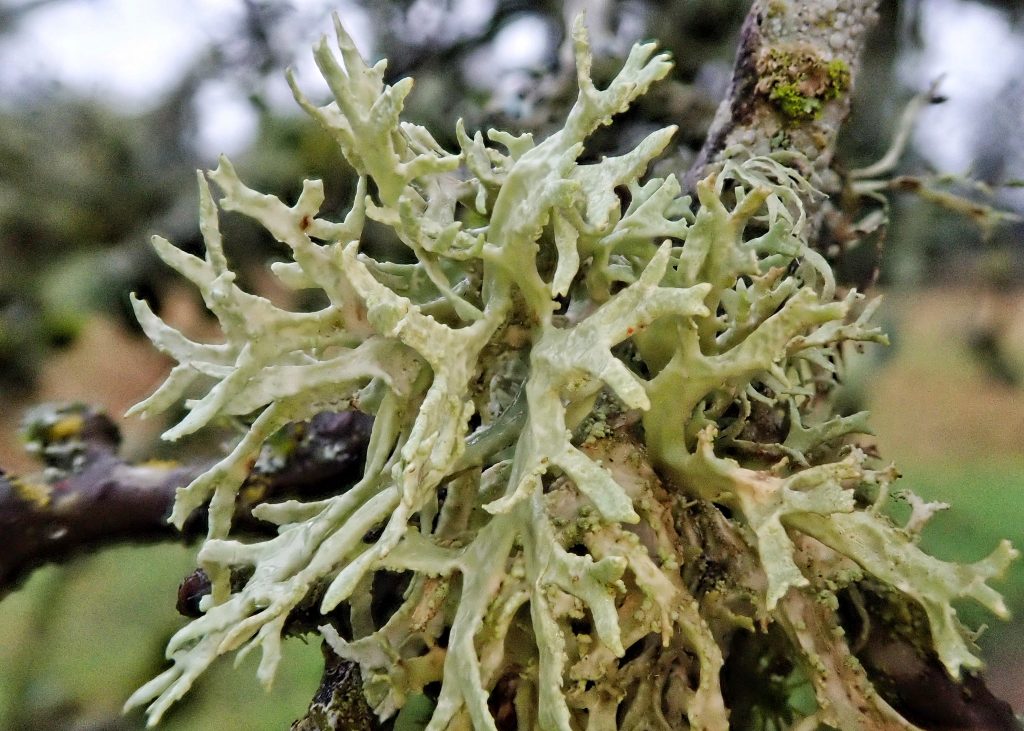
Description– Greyish green to pale green upper surface, noticeably but often subtly lighter on the ventral surface; straplike foliose and bushy thallus with mild ridges, that often curves away from the substrate and forms clumps; branched lobes; soft, somewhat limp feel even when moderately dry; soredia present on margins and across the thallus; lacks isidia and apothecia; cortex K+yellow, medulla P-
Similar species– Ramalina sp. are the same color on the dorsal and ventral surface (and is therefore fruticose rather than foliose), and the thalli are thinner and smoother; R. farinacea has soredia only on the margins and the soralia are often large and oval to oblong; cortex K-, medulla P+orange; R. subleptocarpha has apothecia.
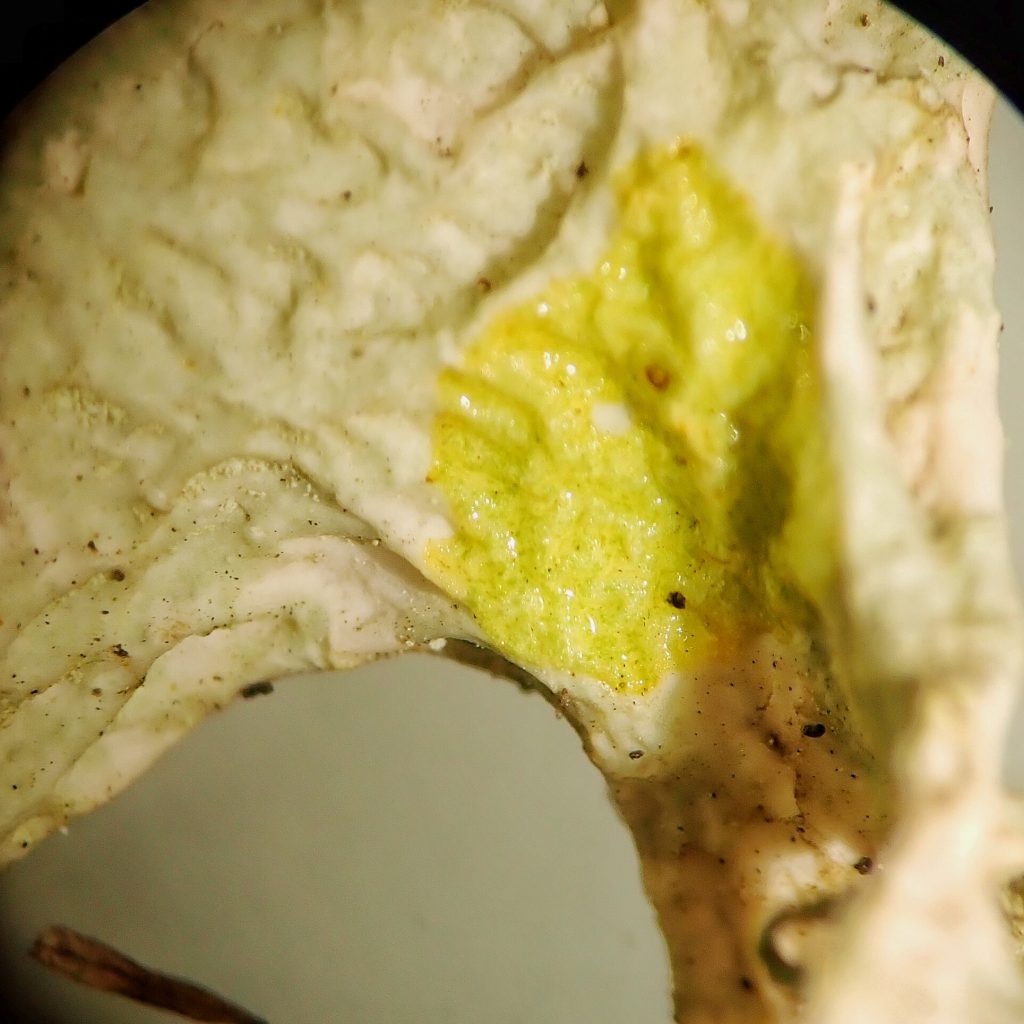
Habitat-Found on trees, shrubs, and bushes at lower elevations with sufficient rainfall or humidity; can be found on most lowland trees west of the Cascades.
Range– Circumpolar; in our region it is found primarily west of the Cascades, and in forested, riparian corridors on the eastside.
Etymology of names– Evernia is Latinized Greek, and means ‘sprouting well’, a reference to the fecundity of this genus. The specific epithet prunastri means ‘prune stars’ in Latin, and apparently references Linnaeus’ belief that they preferred prune trees, and may have looked star-like against their dark bark.
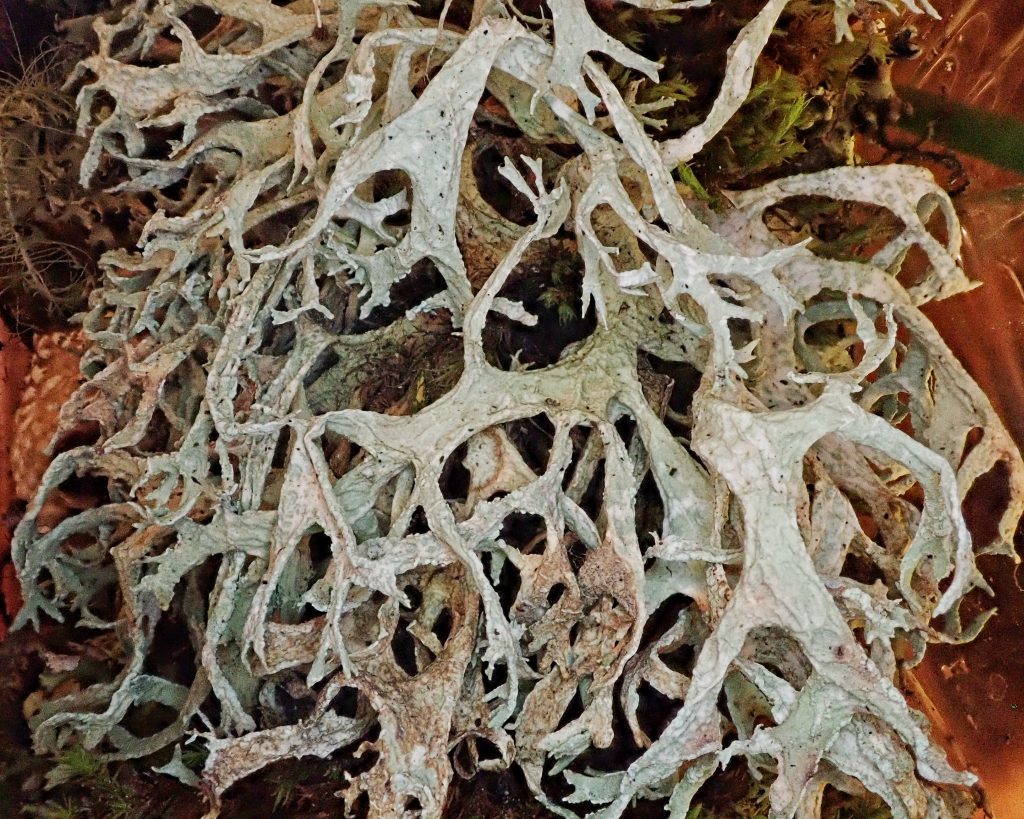
Evernia prunastri – Common Macrolichens of the Pacific Northwest
https://lichenportal.org/cnalh/taxa/index.php?taxon=54378&clid=1129
https://www.waysofenlichenment.net/lichens/Evernia%20prunastri
http://www.lichens.lastdragon.org/Evernia_prunastri.html
https://dnr.wi.gov/topic/EndangeredResources/Lichens.asp?mode=detail&SpecCode=NLTEST7510
https://en.m.wikipedia.org/wiki/Evernia_prunastri
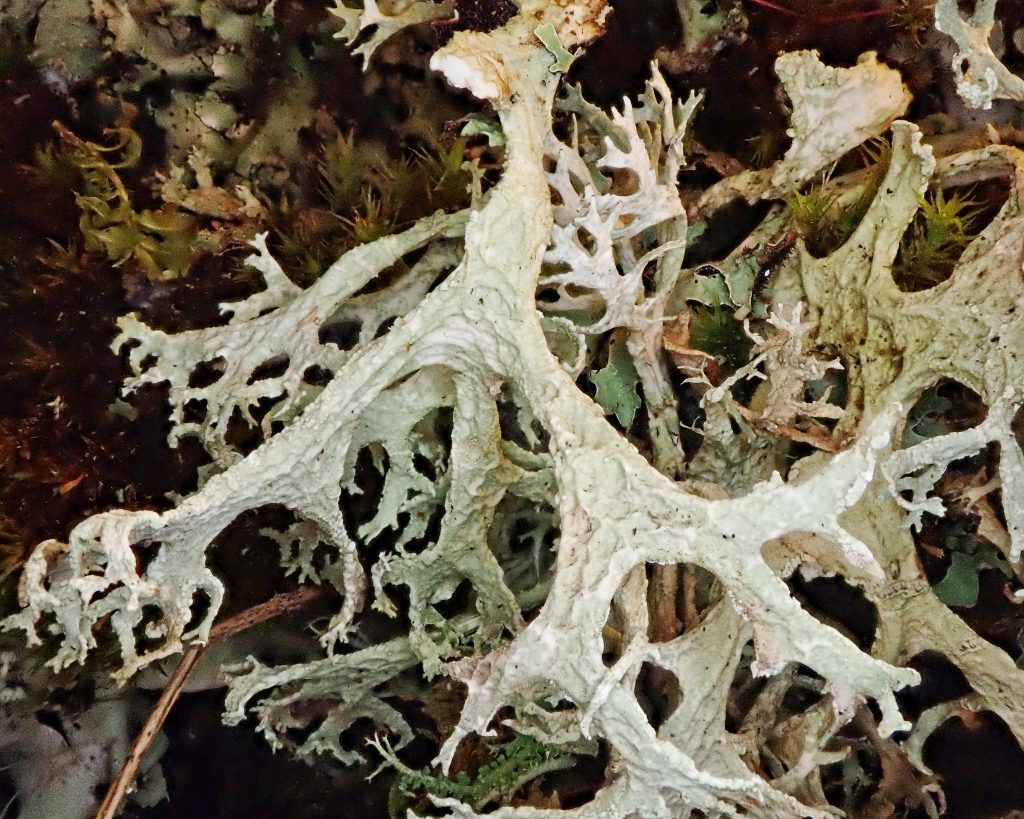
Just one comment, Evernia is technically a foliose lichen, the upper and lower are different color. Ramalina is fruticose, the same color all around.
Thanks Steve. I added a sentence to that effect.
I found some Evernia on rock at Lava Beds in Big Crack on the eastern edge of the park.
There are always exceptions, aren’t there Steve!
Thank you for this. I really enjoyed reading this information. It has always been a tricky one for me to identify correctly.
Perfumer’s Lichen one of my favorites. I wondered if you would get around to it. I learned about it a long time ago. Then one day Id’d it and kinda went huh to myself. It has no scent. This confused me. Later I found out that it holds onto scents that are applied to it, making it particularly useful for the perfume trade.
Oooh a lichen walk:):) Please let me know if you hear of one in our area:):) Thanks